Standard of Ur and other objects from the Royal Gravess
Intentionally buried as part of an elaborate ritual, this ornate object tells us so much, but also too little
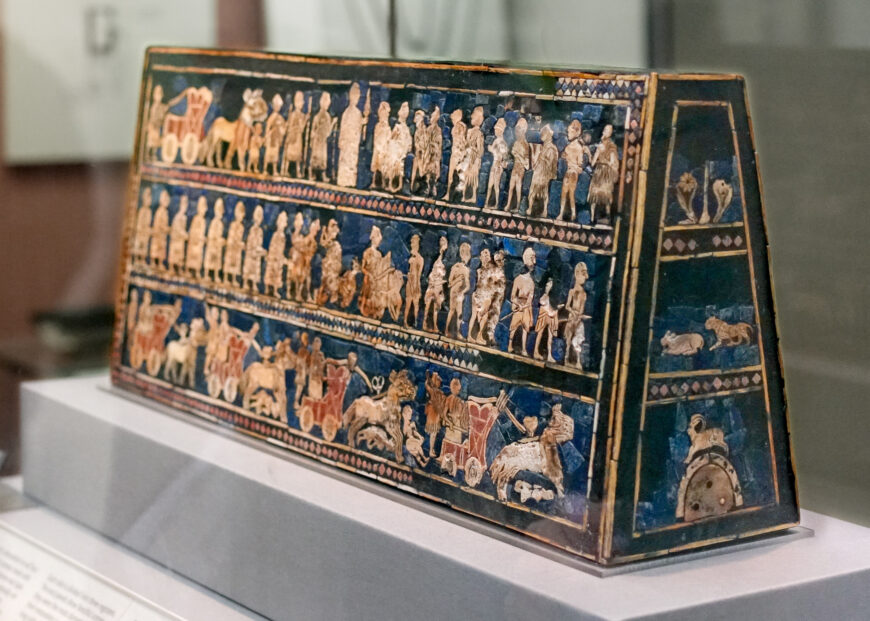
The Standard of Ur, 2600–2400 B.C.E., shell, limestone, lapis lazuli, and bitumen, 21.59 x 49.53 x 12 cm (© The Trustees of the British Museum, London; photo: Steven Zucker, CC BY-NC-SA 2.0)
The violence and grandeur of Sumerian kingship
The Standard of Ur is a fascinating rectangular box-like object which, through intricate mosaic scenes, presents the violence and grandeur of Sumerian kingship. It is made up of two long flat panels of wood (and two short sides) and is covered with bitumen (a naturally occurring petroleum substance, essentially tar) in which small pieces of carved shell, red limestone, and lapis lazuli were set. It is thought to be a military standard, something common in battle for thousands of years: a readily visible object held high on a pole in the midst of the combat and paraded in victory to symbolize the army (or individual divisions of the army) of a war lord or general. Although we don’t know if this object ever saw the melee of battle, it certainly witnessed a grisly scene when it was deposited in one of the royal graves at the site of Ur in the mid-3rd millennium B.C.E.
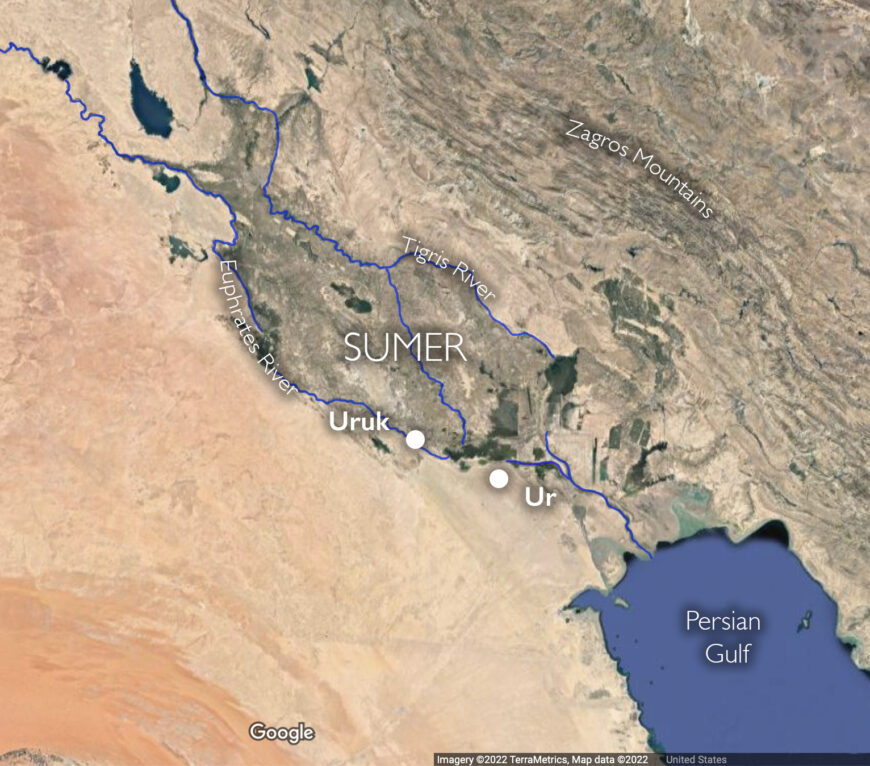
Map of Sumer with approximate locations of Uruk and Ur (underlying map © Google)
In the 1920s the British archaeologist Sir Leonard Woolley worked extensively at Ur and in 1926 he uncovered a huge cemetery of nearly 2,000 burials spread over an area of 70 x 55 m (230 x 180 ft). Most graves were modest, however a group of sixteen were identified by Woolley as royal tombs because of their wealthier grave goods and treatment at interment.
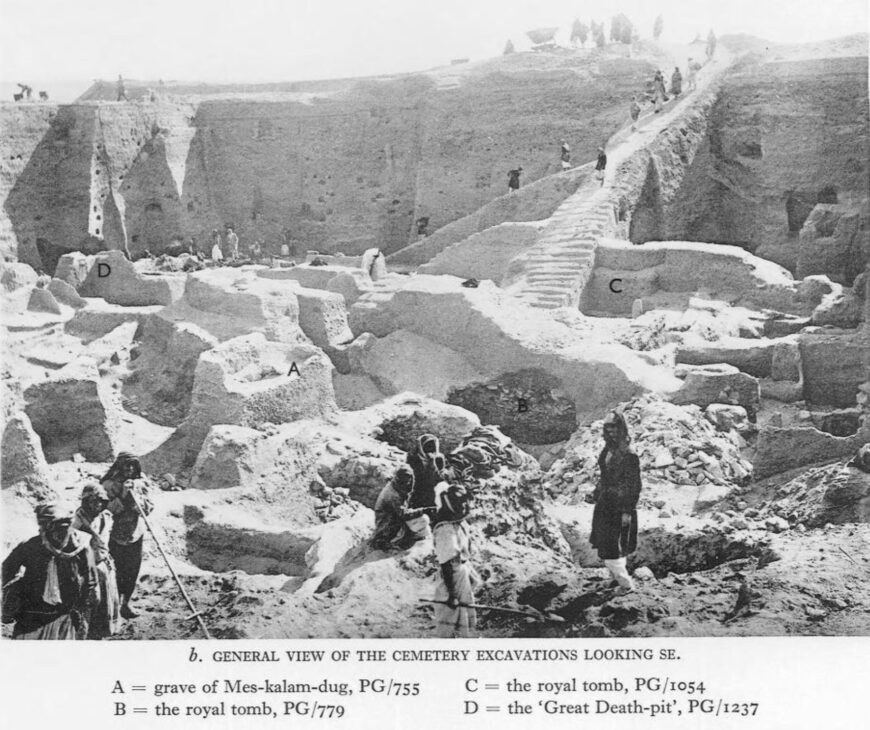
Sir Leonard Woolley, Ur Excavations, volume II, The Royal Cemetery, Plates (British Museum, London and The University Museum, Philadelphia, 1934), plate 8 (available via the Internet Archive)
Each of these tombs contained a chamber of limestone rubble with a vaulted roof of mud bricks. The main burial of the tomb was placed in this chamber and surrounded by treasure (offerings of copper, gold, silver and jewelry of lapis lazuli, carnelian, agate, and shell). The main burial was also accompanied by several other bodies in the tomb, a mass grave outside the chamber, often called the Death Pit. We assume that all these individuals were sacrificed at the time of the main burial in a horrific scene of deference.

Queen’s Lyre (reconstruction), 2600 B.C.E., wooden parts, pegs and string are modern; lapis lazuli, shell and red limestone mosaic decoration, set in bitumen (© The Trustees of the British Museum, London)
One of the royal graves (PG779) had four chambers but no death pit. It had been plundered in antiquity but one room was largely untouched and had the remains of at least four individuals. In the corner of this room the remains of the Standard of Ur were found. One of its long sides was found lying face down in the soil with the other one face up, which lead Woolley to conclude that it was a hollow structure; additional inlay were found on either side of the short ends and appeared to fill a triangular shape and which lead to the Standard being reconstructed with its sloping sides. The remains of the Standard were found above the right shoulder of a man whom Woolley thought had carried it attached to a pole. The identification of this object as a military standard is by no means secure; the hollow shape could just as easily have been the sound box of a stringed instrument, such as the Queen’s Lyre found in an adjacent tomb.
War and peace
The two sides of the Standard appear to be the two poles of Sumerian kingship, war and peace. The war side was found face up and is divided into three registers (bands), read from the bottom up, left to right. The story begins at the bottom with war carts, each with a spearman and driver, drawn by donkeys trampling fallen enemies, distinguished by their nudity and wounds, which drip with blood. The middle band shows a group of soldiers wearing fur cloaks and carrying spears walking to the right while bound, naked enemies are executed and paraded to the top band where more are killed.
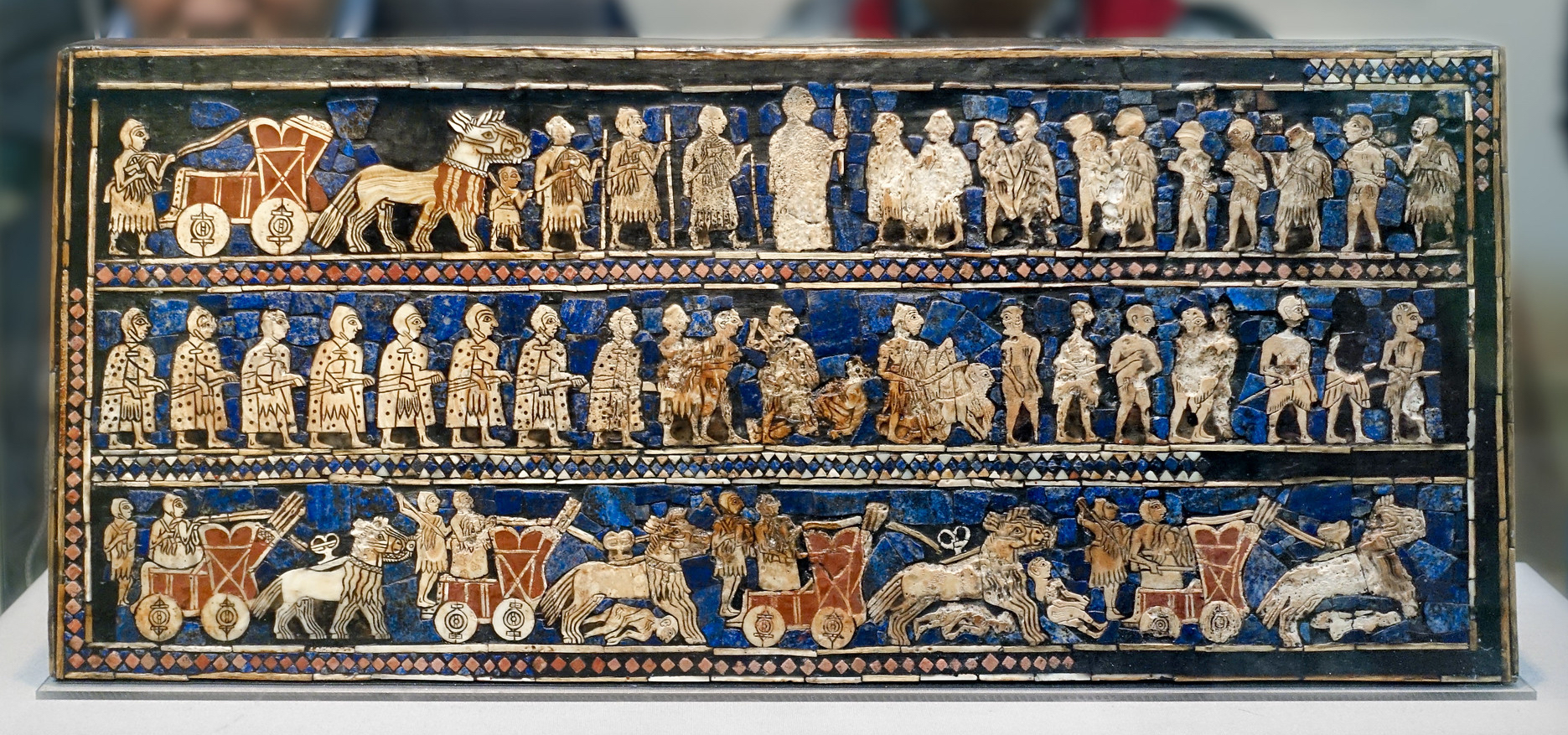
War (detail), The Standard of Ur, 2600–2400 B.C.E., shell, red limestone, lapis lazuli, and bitumen (original wood no longer exists), 21.59 x 49.53 x 12 cm (© The Trustees of the British Museum, London; photo: Steven Zucker, CC BY-NC-SA 2.0)
In the center of the top register, we find the king, holding a long spear, physically larger than everyone else, so much so, his head breaks the frame of the scene. Behind him are attendants carrying spears and battle axes and his royal war cart ready for him to jump in. There is a sense of a triumphal moment on the battlefield, when the enemy is vanquished and the victorious king is relishing his win. There is no reason to believe that this is a particular battle or king as there is nothing which identifies it as such; we think it is more of a generic image of a critically important aspect of Ancient Near Eastern kingship.
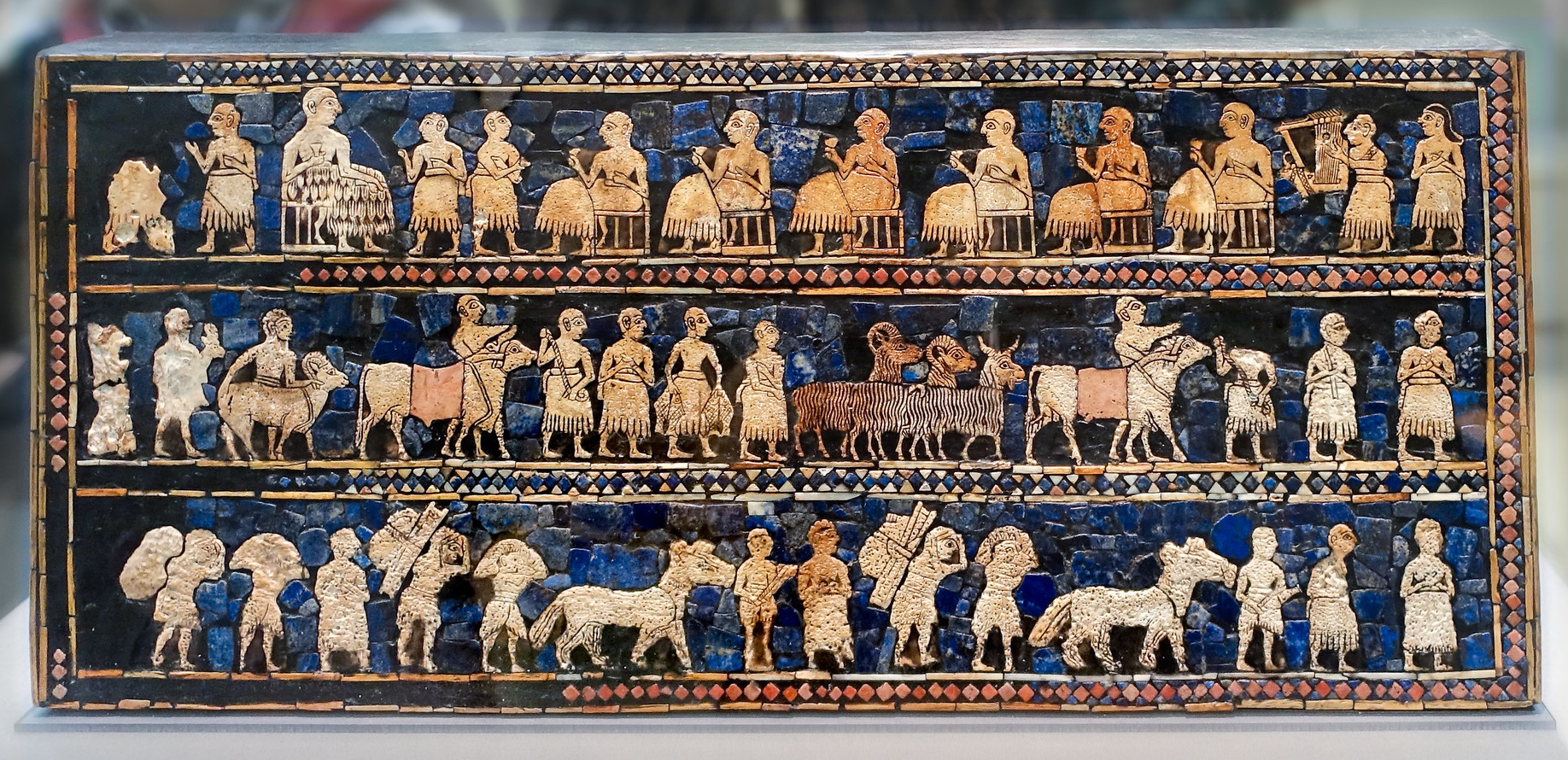
Peace (detail), The Standard of Ur, 2600–2400 B.C.E., shell, red limestone, lapis lazuli, and bitumen (original wood no longer exists), 21.59 x 49.53 x 12 cm (© The Trustees of the British Museum; photo: Steven Zucker, CC BY-NC-SA 2.0)
The opposite peace panel also illustrates a cumulative moment, that of the celebration of the king, this time for great agricultural abundance which is afforded by peace. Again, beginning at the bottom left, we see men carrying produce on their shoulders and in bags and leading donkeys. In the central band, men lead bulls, sheep and goats, and carry fish. In the top register a grand feast is taking place, complete with comfortable seating and musical accompaniment.
On the left, the largest figure, the king, is seated wearing a richly flounce fur skirt, again so large, even seated, he breaks the frame. Was it an epic tale of battle that the singer on the far right is performing for entertainment as he plays a bull’s head lyre, again, like the Queen’s Lyre? We will never know but certainly such powerful images of Sumerian kingship tell us that whomever ended his life with the Standard of Ur on his shoulder was willing to give his life in a ritual of kingly burial.
Related Post
A shocking documentary proves that mermaids do exist
SHOCKING Revelation: Thuya, Mother of Queen Tiye, Was the Grandmother of Akhenaten and Tutankhamun—What Ancient Egyptian Secrets Did She Leave Behind?
Breaking News: Astonishing Discoveries at Karahan Tepe Confirm an Extraterrestrial Civilization is Hiding on Earth, and NO ONE Knows!
Breaking News: Researchers FINALLY Discover U.S. Navy Flight 19 After 75 Years Lost in the Bermuda Triangle!
NASA’s Secret Investigation: Uncovering the Astonishing Mystery of the UFO Crash on the Mountain!
Explosive UFO Docs LEAKED: Startling Proof That Aliens Ruled Ancient Egypt!